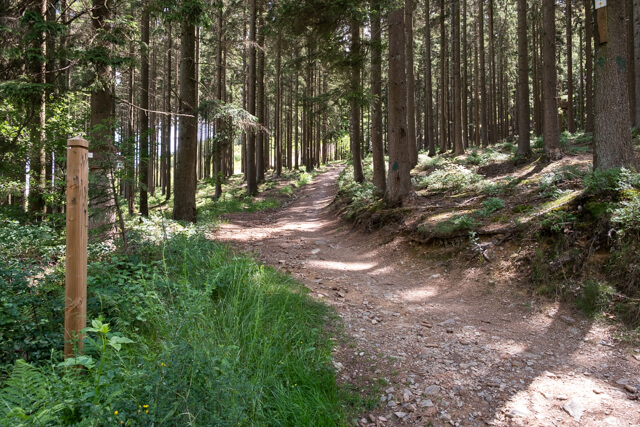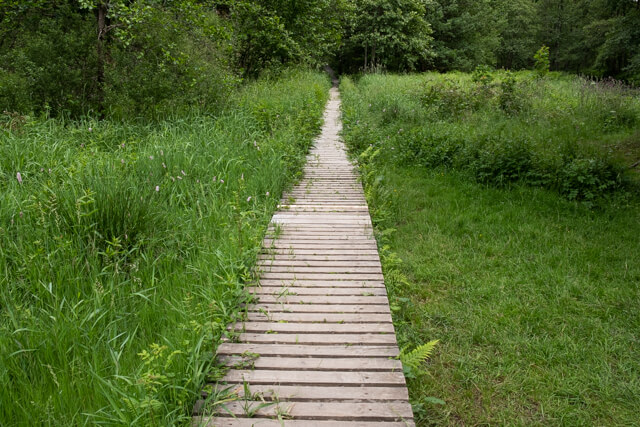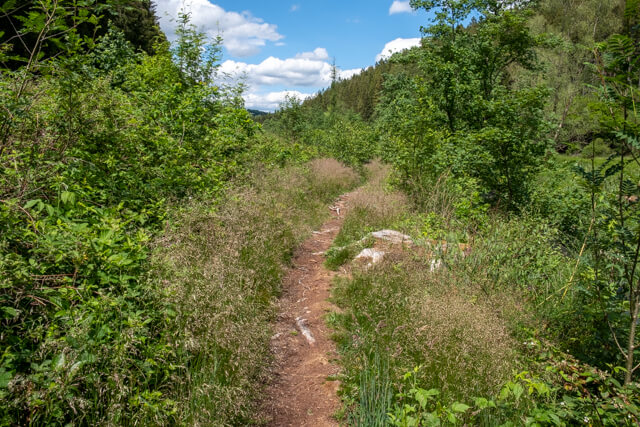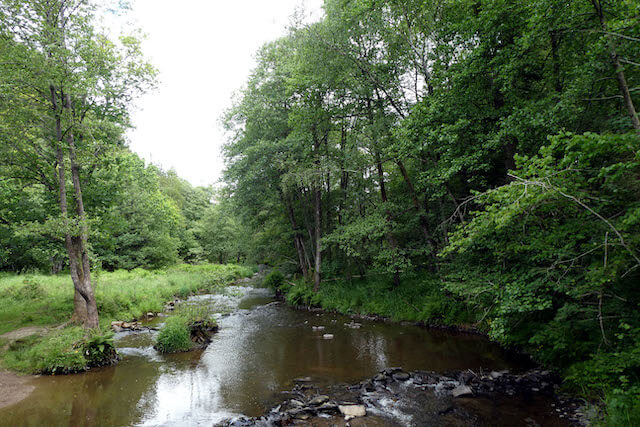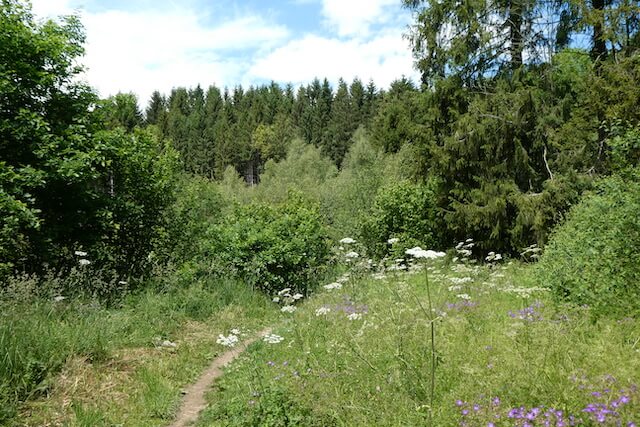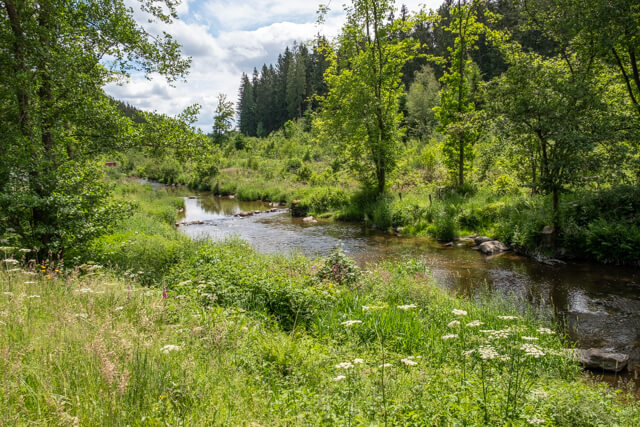
This varied walk goes through the Wolfsbuch, a beautiful pine forest, to the banks of the Amblève where gold miners used to dream of wealth. Wolves and prospectors are no longer there, but nature is all the more.
Distance: 9 km.
Time: 2h30.
Grade: Moderate.
Type: Circular.
Gps Track: Yes.
Route description: Yes.
Wheelchair: Not suitable.
Dog: Allowed.
Height gain: 157 meters.
Trail: Mostly unpaved.
Marking: Walking nodes or blue diamond.
Hiking shoes recommended.
Advertisement.
Wolves and Gold Diggers.
Immediately after departure you walk into the Wolfsbuch, the wolf's forest that extends far beyond the Eastern Cantons and was its territory until the XIX century. Even though we have not heard his cry in the Ardennes for the past 100 years, the etymology of the forest reminds us of its presence. However, wolves have been spotted in the Waimes region ..... you never know. Then you follow the bank of the Amblève which runs straight through the old Ardennes massif. A wooden bridge and wooden decks take you to the isolated hamlet of Thirimont. You cross the Amblève again and follow a winding path where you occasionally see traces of the former exploitation of gold miners. You will return to the starting point along the domain of the former Montenau monastery.
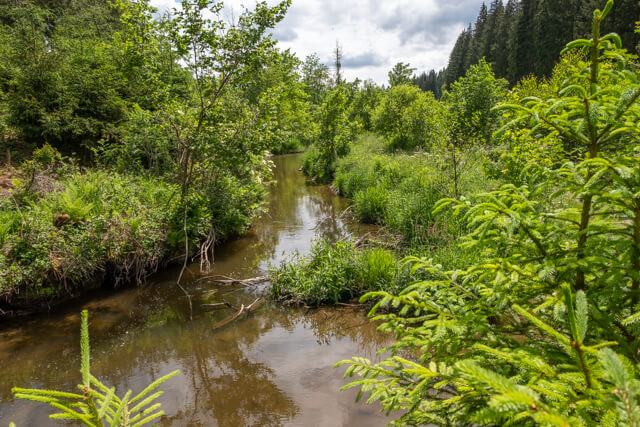
Download PDf for route description.
Well marked&.
POI 1 - Wolfsbuch.
The Wolfsbusch is a forest area of more than 1000 ha. On these hills there were settled Germanic tribes that entered the Roman Empire around 400-600 AD over the Rhine. As a result, a Germanic culture developed here and German is still spoken today. Roman culture developed behind the hills with Gallo-Roman influences, from which later Walloon and French emerged. The Wolfsbusch was a pure deciduous forest for a long time. Beech and oak were mainly exploited. Another raw material is the sandstone. The open-air workshops of the stonemasons who made millstones here are still visible today. West of Montenau, along the Amblève and adjacent streams, quartz veins with small amounts of gold are found. The Celts and Romans were already looking for gold here. At the end of the 19th century it came to a short gold rush, which came to an end very quickly due to the low yield.
No additional information.




